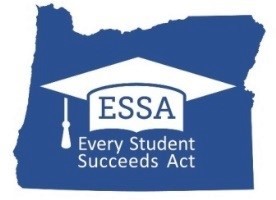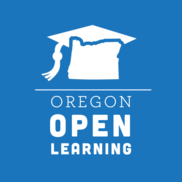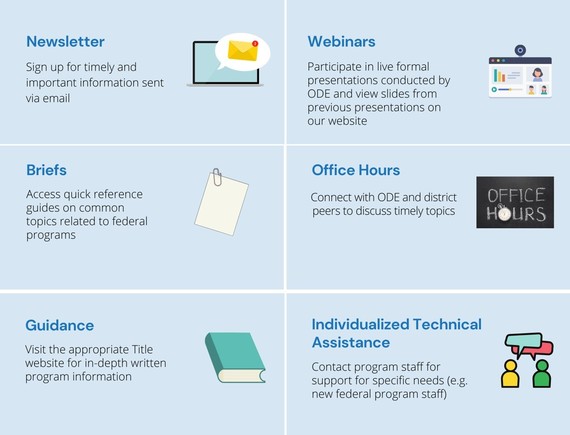
Mark Your Calendar!
-
Principal and Teacher Evaluation Data Collection – Opened September 22nd, closes November 18th
-
CIP Budget Narrative Carryover Applications – Opens November 18, due January 18th
-
Title I-A Comparability Report – Due December 1st
-
Title I-D October Caseload 22-23 data collection - Opens October 27th, closes December 2nd
-
Title I-A/II-A/IV-A/V-B Office Hours in November (Tuesdays 10-11 AM)
- November 22nd: Open Office Hours with no presentation, but questions are welcome!
- November 29: NO OFFICE HOURS
- December 6th: Carryover
- December 13th: Foster Care 101
- December 20th and 27th: NO OFFICE HOURS
CIP Budget Narrative Submission Reminders

The CIP Budget Narrative is where districts describe how they intend to use ESSA grant funds in service of school and district plans for continuous improvement. The 2021-22 CIP Budget Narratives for Titles I-A, I-D, II-A, IV-A and IV-B (REAP/RLIS) opened on August 9th and were due November 1st.
The Federal Systems Team recognizes the multiple demands districts are currently experiencing and is committed to working in partnership to ensure that they receive all funds for which they are eligible. Some additional dates to track are included below:
- Carryover narratives open November 18, 2022 and are due Wednesday, January 18, 2023.
- Funds will be frozen for any district that has not submitted the 2022-23 CIP Budget Narrative by February 1, 2023.
- Funds will be liquidated for any district that has declined or has not applied for federal grants through the 2022-23 CIP Budget Narrative on June 1, 2023.
If your district has not yet submitted a particular narrative, please reach out to your regional specialist with questions or for support. Our team asks that any remaining Budget Narratives be submitted no later than December 19th to allow program specialists to review submissions in a timely manner prior to the holiday break.
-
Jen Engberg: Clackamas, Columbia Gorge, Multnomah and Northwest Regional
-
Sarah Martin: Douglas, Lake, Malheur, South Coast and Southern Oregon
-
Lisa Plumb: Lane, Linn Benton Lincoln and Willamette
-
Amy Tidwell: Grant, Harney, High Desert, InterMountain, Jefferson, North Central and Region 18
|
ESEA Monitoring for 2022-2023

The monitoring of federal grant programs allows ODE and districts to collaborate in providing an equitable education to all students and ensuring accountability. The goal of monitoring by ODE is to support districts in meeting federal requirements as well as provide technical assistance around program implementation.
The Federal Systems Team has oversight and monitoring responsibilities to review compliance of local education agencies (LEAs) within ESEA consolidated programs including:
- Title I, Part A Improving Basic Programs
- Title II, Part A Supporting Effective Instruction
- Title IV, Part A Student Support and Academic Enrichment (SSAE)
- Title V, Part B Rural Education Achievement Program & Rural Low Income Schools
- McKinney-Vento Homeless Education
- Foster Care Student Educational Stability
- Equitable Services to Private Schools
Districts are selected for participation in desk monitoring using a risk based monitoring tool that examines student achievement data, time since the last monitoring cycle, fiscal information and a variety of other factors that may suggest a district is in need of additional support. Desk monitoring reviews take place in winter (late January) and spring (early April).
All districts scheduled to participate in 2022-23 desk monitoring for the programs listed above were notified in September via email. Updated materials are now available on the ODE monitoring website and districts are encouraged to reach out to their monitoring lead with any questions.
Districts will be notified by the Multilingual and Migrant Education team if they are being monitored for Title III or Title I-C. Title IV-B monitoring is currently underway and districts have been notified. Please reach out the specialists listed below with any questions about monitoring of these three programs.
|
ESSA Quick Reference Brief Spotlight: Schoolwide Planning

Every school that receives Title I-A funds must develop a plan with the input of families that is reviewed and updated annually. Through implementation of a schoolwide program the school can invest in strategies that help all and address community needs and systemic issues impacting students’ abilities to succeed.
In ESSA Quick Reference Brief: Developing Schoolwide Plans find out more about the required criteria for schoolwide plans including the Needs Assessment, Goals, Activities and Measures, Strategies for Family Engagement and plan Evaluation and Review. Additional resources include the Criteria for Schoolwide Plans and Oregon’s Title I-A Schoolwide Planning Template. Check out other ESSA Quick Reference Briefs on the Federal Programs web page.
|
Featured Resource: ESEA Monitoring Self-Assessment Tool
Even if your district has not been identified for monitoring this year, check out the ESEA Monitoring Self-Assessment. Used as the basis for the monitoring “entrance meeting” discussions, the self-assessment tool is aligned to programmatic requirements laid out in ESEA and is designed to help districts examine their practices around federal programs.
Districts being monitored complete the self-assessment to reflect on current practices relative to ESEA requirements, noting strengths and identifying where technical assistance/support may be needed from ODE. However, the self-assessment if available for use by any district at any time for the process of program reflection.
Updates to the ESEA Monitoring Organizational Tool
The ESEA Monitoring Organizational Tool includes information on all the requirements within the Elementary and Secondary Education Act (ESEA), reauthorized under the Every Student Succeeds Act (ESSA), for which districts are responsible. This tool serves as a reference for districts regarding what documentation should be maintained at the local level.
Changes have been made to this tool to remove duplications, provide new resources, add evidence focused on district practices and include items required by law that were found to be missing in a recent review of the document.
The Federal Systems Team is committed to minimizing changes to documentation and communicating when changes are made. The table below describes the changes to the ESEA Monitoring Organizational Tool. Please don’t hesitate to reach out to any of the following program specialists with questions about these changes.
|
Monitoring Category
|
Changes Made
|
Reason for Change
|
|
COMMON COMPLIANCE
|
|
CC-G: Semi-Annual Certification
|
Combined with CC-H
Removed semi-annual certification form and fixed schedule forms and replaced them with sample time and effort form
|
Duplication
|
|
TITLE I-A
|
|
Title I-A
|
No categories were changed, but new resources were linked including:
|
Provide additional resources
|
|
TITLE II-A
|
|
IIA-A: Professional Development Plan
|
Removed
|
Duplication covered by CC-D
|
|
IIA-B: PD Strategies Documentation
IIA-C: PD Strategies Implementation
|
- Combined into new IIA-A “Program Implementation”
- All the evidence from B & C were combined into the new A
|
Duplication – Old IIA-B and C included a lot of overlap
|
|
IIA-D: Evidence of Impact
|
Retitled to “Program Evaluation” and labeled IIA-B
One change to the evidence was made - Results of analysis of data which could include:
- Educator evaluation data
- Student achievement/growth data
- Attendance and behavior data, graduation rate, course participation rates
|
Accommodation for changes to numbering of other indicators in this category
|
|
Title II-A
|
New indicator added “Systems for Professional Growth and Improvement” and labeled IIA-C
|
Review of ESSA revealed that the previous version of the document did not include this required item
·Accommodation for changes to numbering of other indicators in this category
|
|
TITLE IV-A
|
|
IVA-B: Evaluation of Programs
|
Evaluation of Programs in now IVA-C
|
Revised to clarify process
|
|
IVA-C: Coordination with Community Programs
|
Coordination is now IVA-B
|
Revised to clarify process
|
|
EQUITABLE SERVICES
|
|
PS-B: Timely & Meaningful Consultation
|
PS-B is now Identifying Private Schools. Consultation was moved to PS-C
Evidence added:
- Copy of Intent to Participate letters/emails and proof of receipt for private schools that did not attend consultation
|
Adding evidence focused on district practices
|
|
PS-C: Contracts
|
This indicator was replaced with Consultation
No new evidence was added
|
Consultation was moved down to accommodate a new indicator
|
|
PS-D: Program Evaluation
|
Title changed to Assessing Needs & Evaluating Programs
Evidence added:
- Documentation of private school needs assessment and program evaluation for schools that accept services
|
Adding evidence focused on district practices
|
|
PS-E: Resolving Disagreements
|
This is a new indicator
Documentation of the resolution of any disagreements when the district and a private school did not completely agree during consultation
|
Adding evidence focused on district practices
|
|
MCKINNEY-VENTO
|
|
McKinney-Vento
|
No categories were changed, but evidence was added
Evidence added:
-
MV-F: The number of McKinney-Vento students, to include unaccompanied students, using transportation year over year
-
MV-G: The number of disputes and appeals and the outcome each year
-
MV-H: MV information posted on the school/district website
-
MV-J: Annual tracking of the number of MV students, to include unaccompanied youth, who completed the FAFSA
|
Adding evidence focused on district practices
|
|
FOSTER CARE
|
|
FC-B: District Point of Contact & Training
|
District Point of Contact is now FC-C and is retitled “District Liaison & Training”
|
Name change to align with other programs
|
|
FC-C: Enrollment Policy
|
Enrollment Policy is now FC-B
Evidence added:
- Documentation and/or description of training delivered to school staff and district staff
|
Adding evidence focused on district practices
|
|
FC-D: Caseworker Collaboration
|
Renamed “Internal and External Collaboration”
|
Expanding category to include partnerships beyond ODHS
|
House Bill 4013: Tuition Support for Students in Foster Care
HB 4013 details a number of supports and opportunities available to students in Foster Care or experiencing housing instability. The Tuition and Fee Waivers section specifically states that, “a current [foster child] or former foster child, or a current or former homeless youth, under 25 years of age who is enrolled in courses totaling one or more credit hours at an institution of higher education as an undergraduate… shall have the amount of tuition and all fees levied against the student waived if attending an institution of higher education for purposes of pursuing an initial undergraduate degree.” The student must complete and submit a FAFSA application to as a requirement for this waiver, and other factors may be considered to determine eligibility. You can read the bill in its entirety here (about 5 pages,) Section 3 provides the full context. |
|
 |
Oregon’s K-12 OER Hub
 |
|
The Oregon Open Learning Hub is a digital resource repository and collaboration space for educators, administrators, and other educational partners to curate, create, and remix open educational resources (OER). The Hub is a portal to over 50,000 openly licensed resources available on OER Commons, searchable by grade level, subject, and standard.
Here are a few suggestions to get started with OER Commons:
Please feel free to reach out to the Oregon Open Learning Team at OregonOpenLearning@ode.oregon.gov with questions, comments, and suggestions. To receive the Oregon Open Learning quarterly newsletter, sign up here.
|
Office Hours for SY 2022-23 |
|
 |
FST's "Framework of Support"
Our goal is to provide differentiated support and strengthen the partnership between districts and ODE federal program staff. Check out the resources and support below and please don’t hesitate to reach out and let us know how we can support you!

|